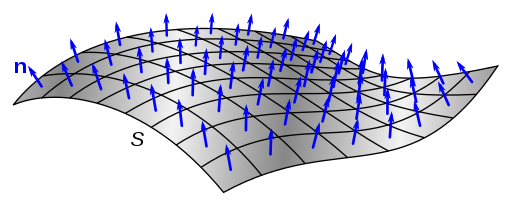Scalar quantities have magnitude (size) only, like temperature. Vectors have magnitude and direction, like velocity or force.
TL;DR Scalar Vs. Vector
In real life, we encounter examples of both scalars and vectors every day. Temperature is a scalar quantity because it only has magnitude (e.g., 25 degrees Celsius). On the other hand, velocity is a vector quantity as it includes both magnitude (e.g., 50 km/h) and direction (e.g., north).
What is a Scalars?

A scalar is a quantity that has magnitude but no direction. In other words, it’s all about size and doesn’t concern itself with which way something is going. Scalars can be described using just one number or value.
Think of temperature – whether you’re measuring in Celsius or Fahrenheit, the temperature itself doesn’t have a specific direction associated with it. It’s just a numerical value that tells us how hot or cold something is.
Another example of a scalar quantity is time. We measure time in seconds, minutes, hours, days. Time doesn’t have any inherent direction to it; it simply exists as an interval between events.
Mass is another scalar quantity. When we talk about the mass of an object, we’re only concerned with how much matter it contains – not where that matter might be located within the object.
So, when considering scalars, think magnitude without direction. They are fundamental to understanding various aspects of our physical world and play an important role in many branches of science and mathematics alike.
What are Vectors?

Vectors have both magnitude and direction. This means that not only do they represent quantities like displacement or velocity but also indicate where they are going.
A vector is represented by an arrow with its length indicating the magnitude and its direction showing the way it points. The magnitude can be measured in units such as meters or kilometers, while the direction is given by an angle relative to a reference axis.
Vectors can be added together using specific rules known as vector addition. This operation combines two or more vectors to create a resultant vector that represents their combined effect.
It’s important to note that vectors follow certain properties such as commutativity (the order doesn’t matter when adding), associativity (grouping doesn’t affect the result), and distributivity (scalar multiplication distributes over vector addition).
These mathematical tools find applications in various fields ranging from physics equations describing motion to computer graphics for creating realistic animations. Understanding how vectors work opens up doors to comprehending many phenomena in our everyday lives.
Scalar Vs. Vector – Key differences
| Aspect | Scalar Quantity | Vector Quantity |
|---|---|---|
| Definition | Describes quantities with magnitude (size) only. | Describes quantities with both magnitude (size) and direction. |
| Example | Temperature, speed, mass, time. | Displacement, velocity, force, acceleration. |
| Representation | Represented by a single numerical value. | Represented by both a magnitude (numerical value) and a direction (often indicated by an arrow or components). |
| Addition/Subtraction | Scalars add and subtract algebraically. | Vectors add and subtract considering both magnitude and direction (vector addition). |
| Multiplication | Scalars multiply and divide algebraically. | Vectors can be multiplied by scalars (scalar multiplication) or other vectors (vector multiplication). |
| Physical Effects | Scalar quantities describe phenomena with no specific direction, such as temperature change. | Vector quantities describe phenomena with specific direction, like an object's motion. |
| Units | Units are typically one-dimensional (e.g., degrees Celsius, meters per second, kilograms). | Units are multidimensional, including both magnitude and direction (e.g., meters per second north, Newtons). |
| Graphical Representation | Represented on a one-dimensional number line or bar graph. | Represented graphically with arrows or diagrams indicating direction. |
| Examples in Physics | Work done, energy, speed, distance. | Displacement, velocity, acceleration, force. |
Examples of Scalars and Vectors in Real Life
Scalars
- Temperature: Temperature is a scalar quantity that measures the degree of hotness or coldness of an object. It only has magnitude and no direction.
- Mass: Mass is a scalar quantity that measures the amount of matter in an object. It is typically measured in kilograms (kg) and does not have direction.
- Time: Time is a scalar quantity that measures the duration of events or intervals. It is typically measured in seconds (s) and has no direction.
- Energy: Energy is a scalar quantity that measures the capacity to do work or produce heat. It can be measured in joules (J) and lacks direction.
- Distance: Distance is a scalar quantity that measures the length of a path traveled by an object. It is typically measured in meters (m) and has no direction.
Vectors
- Displacement: Displacement is a vector quantity that describes the change in position of an object. It has both magnitude (the distance between initial and final positions) and direction.
- Velocity: Velocity is a vector quantity that describes an object’s speed and direction of motion. It is measured in meters per second (m/s) and indicates both how fast an object is moving and in which direction.
- Force: Force is a vector quantity that represents a push or pull on an object. It has magnitude (measured in newtons, N) and direction, indicating the direction of the applied force.
- Acceleration: Acceleration is a vector quantity that measures the rate of change of an object’s velocity. It has magnitude (measured in meters per second squared, m/s²) and direction, indicating whether an object is speeding up, slowing down, or changing direction.
- Momentum: Momentum is a vector quantity that represents the product of an object’s mass and velocity. It has both magnitude and direction and is conserved in collisions.
- Displacement of a Car: If a car moves from one point to another, its displacement is a vector quantity that specifies how far it traveled and in which direction.
- Wind Velocity: Wind speed and direction represent a vector quantity, where the magnitude is the wind speed, and the direction indicates from where the wind is blowing.
- Weight: Weight is a vector quantity that represents the force of gravity acting on an object. It has both magnitude (measured in newtons) and direction, pointing toward the center of the Earth.
These examples illustrate the distinction between scalar quantities, which have only magnitude, and vector quantities, which have both magnitude and direction, in various aspects of everyday life and physics.
Image Credits
Featured Image By – Chetvorno, CC0, via Wikimedia Commons
Image 1 By – Nile from Pixabay
Image 2 By – Daniel Reche from Pixabay








